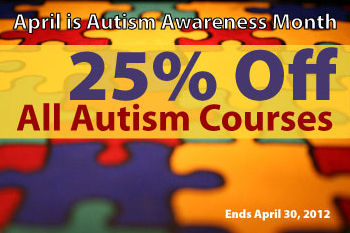By Lee A. Wilkinson, EdD, PhD, NCSP
 More children and youth are being diagnosed with autism spectrum disorder (ASD) than ever before. Epidemiological research indicates a progressively rising prevalence trend for ASD over the past decade. Autism is much more prevalent than previously thought, especially when viewed as a spectrum condition with varying levels of symptom severity. Surveys focusing on this broader definition of autism indicate that ASD is one of the fastest growing disability categories in the world. Recent findings of the Centers for Disease Control and Prevention (CDC) Autism and Developmental Disabilities Monitoring Network ADDM (2012) indicate that one in every 88 school-age children in the United States has an autism spectrum disorder (ASD). This represents an estimated increase of 78% in the prevalence of ASD when compared with the data for earlier surveillance years. Autism is now considered the second most serious developmental disability after intellectual disability and more prevalent among children than cancer, diabetes, and Down syndrome.
More children and youth are being diagnosed with autism spectrum disorder (ASD) than ever before. Epidemiological research indicates a progressively rising prevalence trend for ASD over the past decade. Autism is much more prevalent than previously thought, especially when viewed as a spectrum condition with varying levels of symptom severity. Surveys focusing on this broader definition of autism indicate that ASD is one of the fastest growing disability categories in the world. Recent findings of the Centers for Disease Control and Prevention (CDC) Autism and Developmental Disabilities Monitoring Network ADDM (2012) indicate that one in every 88 school-age children in the United States has an autism spectrum disorder (ASD). This represents an estimated increase of 78% in the prevalence of ASD when compared with the data for earlier surveillance years. Autism is now considered the second most serious developmental disability after intellectual disability and more prevalent among children than cancer, diabetes, and Down syndrome.
Autism Spectrum Disorder: Evidence-Based Screening and Assessment is a new 3-hour online continuing education (CE/CEU) course that identifies DSM-5 diagnostic changes in the ASD diagnostic criteria, summarizes the empirically-based screening and assessment methodology in ASD, and describes a comprehensive developmental approach for assessing students with ASD.
Professional Development Resources is approved by the American Psychological Association (APA) to sponsor continuing education for psychologists; by the National Board of Certified Counselors (NBCC) to offer home study continuing education for NCCs (#5590); the Association of Social Work Boards (ASWB #1046, ACE Program); the California Board of Behavioral Sciences (#PCE1625); the Florida Boards of Clinical Social Work, Marriage & Family Therapy, and Mental Health Counseling (#BAP346) and Psychology & School Psychology (#50-1635); the Illinois DPR for Social Work (#159-00531); the Ohio Counselor, Social Worker & MFT Board (#RCST100501); the South Carolina Board of Professional Counselors & MFTs (#193); and the Texas Board of Examiners of Marriage & Family Therapists (#114) and State Board of Social Worker Examiners (#5678).
This online course provides instant access to the course materials (PDF download) and CE test. Successful completion of the online CE test (80% required to pass, 3 chances to take) and course evaluation are required to earn a certificate of completion. You can print the test (download test from My Courses tab of your account after purchasing) and mark your answers on while reading the course document. Then submit online when ready to receive credit.
Lee A. Wilkinson, EdD, PhD, NCSP, is an author, applied researcher, and practitioner. He is a nationally certified school psychologist, registered psychologist, chartered scientist, and certified cognitive-behavioral therapist. Dr. Wilkinson is currently a school psychologist in the Florida public school system where he provides diagnostic and consultation services for children with autism spectrum disorders and their families. He is also a university educator and teaches graduate courses in psychological assessment, clinical intervention, and child and adolescent psychopathology. His research and professional writing has focused on behavioral consultation and therapy, and children and adults with Asperger syndrome and high-functioning autism spectrum disorders. He has published numerous journal articles on these topics both in the United States and the United Kingdom. Dr. Wilkinson can be reached at http://bestpracticeautism.com.



























